Welcome to the enigmatic world of mysterious temples, where history intertwines with legend, and whispers of the past echo through the stones. Across the globe, there exist hidden sanctuaries, shrouded in secrecy and riddles, each bearing witness to a long-forgotten era.
These sacred structures, veiled in mystique and awe, have captivated the minds of explorers, historians, and curious souls alike, beckoning them to unravel the secrets that lie within their ancient walls.
From the dense jungles of South America to the remote peaks of the Himalayas, and the vast deserts of the Middle East to the isolated islands of the Pacific, these temples stand as silent witnesses to civilizations long gone, leaving behind an enigmatic legacy that continues to intrigue and challenge our understanding of the past.
Let’s step into the footsteps of adventurers and archaeologists as we embark on a journey of discovery through the shadowy realms of these enigmatic temples. Uncover the puzzles and myths concealed within their intricate architecture, decipher the cryptic symbols etched into their stone surfaces, and marvel at the advanced engineering feats of ancient cultures.
As we venture forth, the allure of these sacred sites will lead us into a world of wonder, mystery, and perhaps, even enlightenment.
10 Mysterious Temples of the World
Join us as we unlock the enigmas and reveal the stories of the mysterious temples of the world, where the past whispers and the present wonders at the secrets they hold.
1. The Sree Padmanabhaswamy Temple, Thiruvananthapuram, Kerala
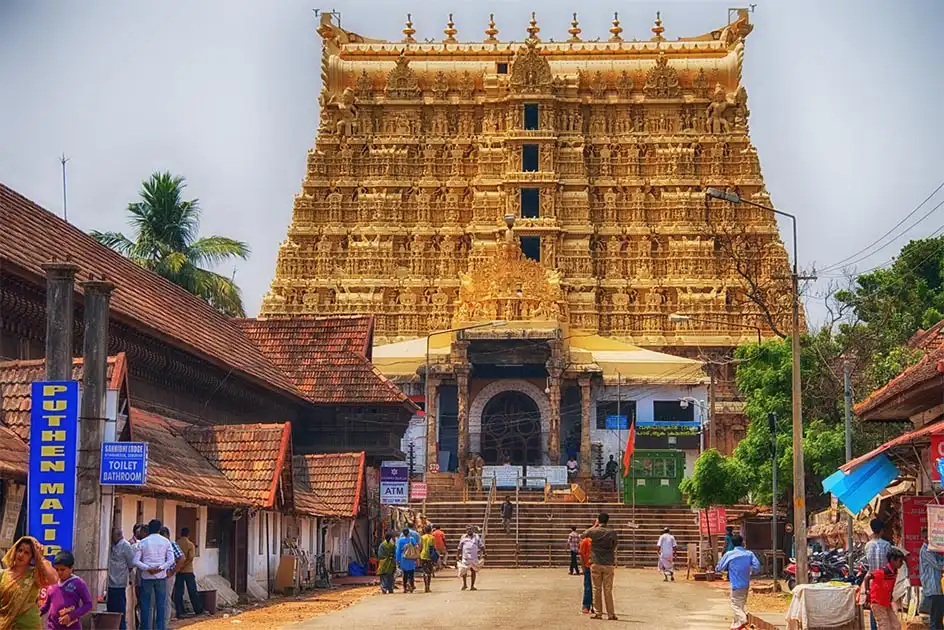
The Sree Padmanabhaswamy Temple is located in Thiruvananthapuram, Kerala, India. The temple is not only a magnificent architectural wonder but also the subject of fascinating mysteries and hidden secrets.
Here are some of the mysterious aspects that surround this ancient temple:
The Vault B
One of the most intriguing secrets lies within Vault B, also known as “Kallara B.” It remained sealed for centuries until it was opened in 2011.
Inside, experts discovered an astonishing treasure trove, including gold coins, jewels, and precious artifacts estimated to be worth billions of dollars.
The discovery made headlines worldwide and sparked speculation about the vast wealth hidden within the other vaults of the temple.
The Hidden Treasures
Sree Padmanabhaswamy Temple is said to house six vaults labeled from A to F, with Vault B being the most prominent. While five of the vaults have been opened and their contents revealed, Vault A remains unopened due to the belief that ancient curses guard it. The contents of this vault remain a mystery, leaving many to wonder about the untold riches or sacred artifacts it might hold.
The Mysterious Doors
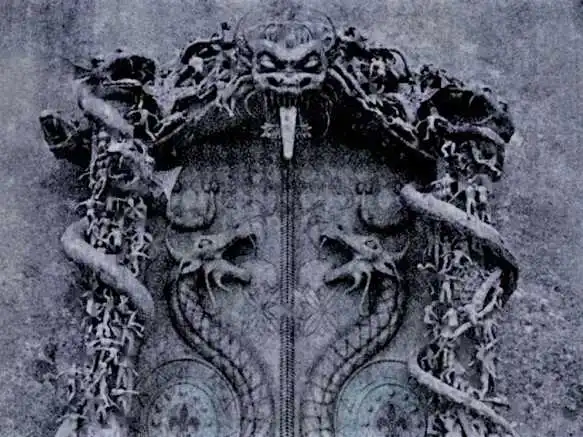
The temple features several intricately carved doors, known as “The Mystery Doors.” These doors are said to be unique and possess complex locking mechanisms that have baffled experts and scholars for centuries.
Despite their efforts, the exact construction and unlocking techniques of these doors remain a mystery, adding an aura of intrigue to the temple.
The Ananta Shayanam
Within the temple complex, there is a remarkable idol of Lord Vishnu reclining on the serpent god Ananta Shesha.
The idol is made from a rare combination of mysterious materials, including a special Ayurvedic mix known as Katusarkara Yogam, making it one of a kind. The origin and composition of this idol have puzzled researchers, leading to various theories and speculation.
The Underground Tunnels
Legends speak of a network of secret underground tunnels beneath the temple, leading to various locations in Thiruvananthapuram.
These tunnels are said to be concealed and inaccessible, with their purpose and extent still largely unknown.
Some believe they were used for escape routes during times of war or as pathways for transporting the temple’s treasures.
The Sree Padmanabhaswamy Temple continues to captivate the imagination of people worldwide, with its hidden vaults, intricate doors, and enigmatic history.
The mysteries that surround it not only add to its allure but also remind us of the ancient tales and secrets that lie within its sacred walls, waiting to be discovered and unveiled.
2. Angkor Wat, Cambodia
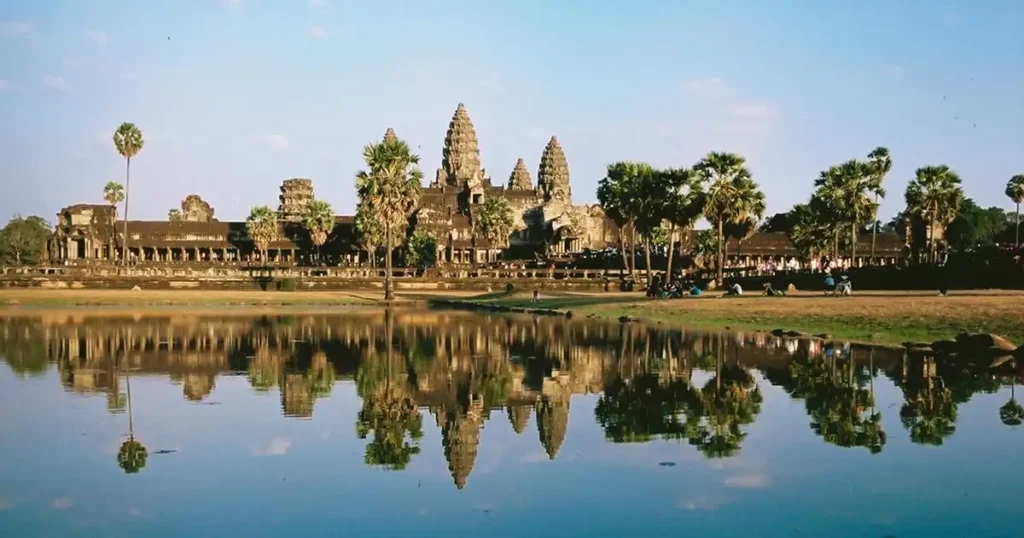
Nestled amidst the lush jungles of Cambodia, Angkor Wat stands as an enigmatic testament to a forgotten empire. It’s towering spires and intricate stone carvings guard the secrets of a bygone era, beckoning explorers to unravel its mysteries.
Time-worn and awe-inspiring, this ancient marvel continues to captivate with its allure and intrigue. Here are some intriguing aspects of Angkor Wat:
Massive Scale
Angkor Wat is the largest religious monument in the world, covering an area of about 162.6 hectares.
It’s vast size and intricate design leaves visitors amazed and wondering about the architectural and engineering skills of the Khmer civilization.
Unknown Architectural Intentions
Despite extensive research, the exact purpose of Angkor Wat remains somewhat mysterious. While it is predominantly considered a Hindu temple dedicated to Vishnu, there are theories that suggest it may have served as a funerary temple for King Suryavarman II or had symbolic and astronomical significance.
Hidden Chambers and Passages
Over the years, archaeologists have discovered hidden chambers and underground passages within Angkor Wat, adding to its enigmatic aura.
These spaces are believed to have held religious artifacts or served ceremonial functions, but much remains unknown.
Bas-Reliefs and Symbolism
The temple’s walls are adorned with intricate bas-reliefs depicting various scenes from Hindu mythology and Khmer history. Deciphering the meaning and symbolism behind these carvings continues to be a subject of scholarly debate and fascination.
Lost City of Angkor
Angkor Wat is part of a larger archaeological complex known as Angkor, which was the capital of the Khmer Empire. The abandonment and subsequent rediscovery of this ancient city in the dense jungles of Cambodia contribute to its mystique and allure.
Angkor Wat’s combination of grandeur, hidden secrets, and its deep connection to the Khmer civilization make it a truly mesmerizing and mysterious temple.
3. Göbekli Tepe, Turkey
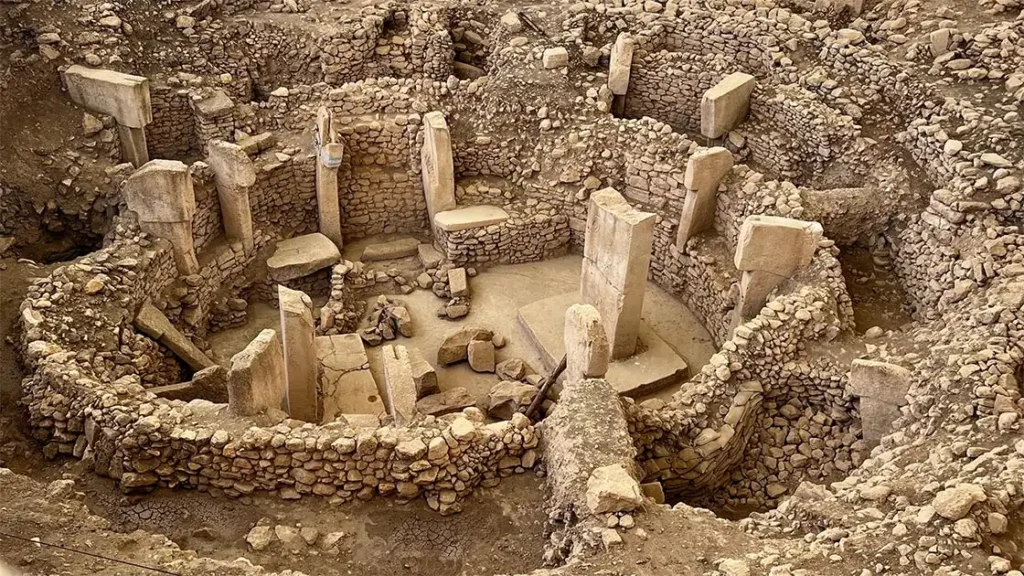
Hidden within the rolling hills of Turkey, Göbekli Tepe stands as a silent enigma, shrouded in the mists of time. Its massive stone pillars, adorned with intricate carvings, challenge our understanding of human history.
Who built it? Why was it buried? Unveiling its secrets, this ancient site unravels the mysteries of our distant past.
Here are some intriguing aspects of Göbekli Tepe:
Age and Discovery
Göbekli Tepe is believed to be the oldest known temple complex in the world, dating back to around 9600 BCE, making it more than 11,000 years old. Its discovery in the 1990s revolutionized our understanding of prehistoric civilizations.
Advanced Construction
The monumental stone pillars at Göbekli Tepe, some of which weigh up to 50 tons, were intricately carved and arranged in circular structures. The advanced construction techniques used by its ancient builders still puzzle archaeologists.
Purpose and Function
The purpose of Göbekli Tepe remains an enigma. It is speculated that the site was a ritual center or a place of communal gatherings for the early hunter-gatherer societies.
The intricately carved reliefs on the pillars, depicting animals and abstract symbols, suggest a significant religious or ceremonial significance.
Buried and Preserved
Surprisingly, Göbekli Tepe was intentionally buried by its ancient inhabitants around 8000 BCE, preserving it remarkably well.
The reasons behind this deliberate burial and subsequent abandonment remain speculative.
Megalithic Mystery
The existence of such an advanced and monumental construction during a time when humans were traditionally believed to be living in small nomadic groups raises questions about the development of civilization and the role of religion in shaping early societies.
Göbekli Tepe continues to intrigue archaeologists and researchers, offering valuable insights into the ancient past and challenging our understanding of human history.
Its enigmatic origins, purpose, and sophisticated construction make it one of the most mysterious and awe-inspiring temples in the world.
4. Karnak Temple, Egypt
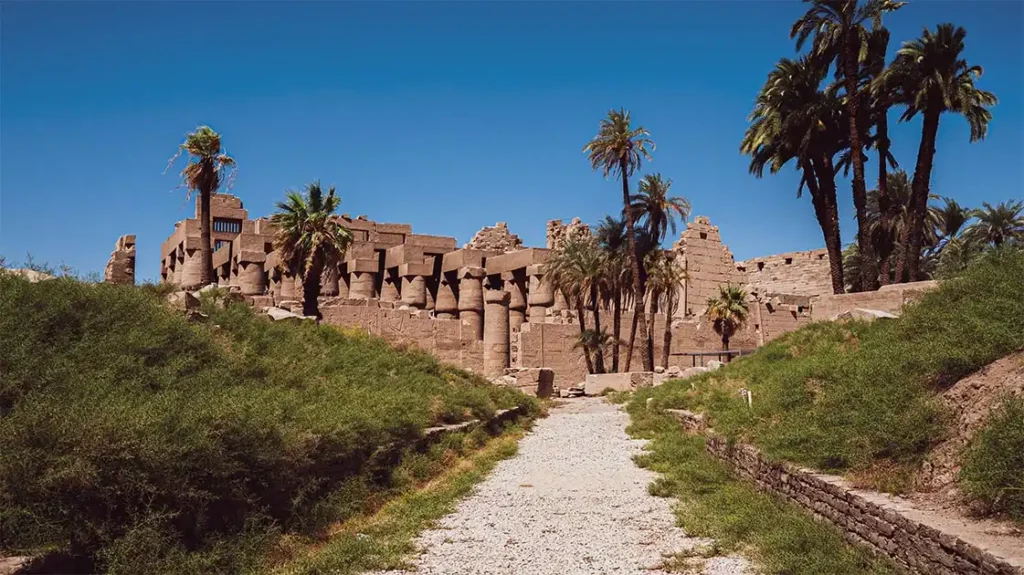
Karnak Temple, located in Luxor, Egypt, is an awe-inspiring and mysterious temple complex that has captured the imagination of people worldwide. Here are some intriguing aspects of Karnak Temple:
Vastness and Architectural Marvels
Karnak Temple is one of the largest religious complexes ever built. It spans over 200 acres and consists of numerous temples, pylons, obelisks, and hypostyle halls. The sheer scale of its construction and the intricate details of its architecture are astonishing.
Long Construction Period
The construction of Karnak Temple spanned over 2,000 years, with each pharaoh leaving their mark on the complex. This prolonged construction period and the different architectural styles incorporated make unraveling its history and purpose an intriguing challenge.
Sacred Lake and Sacred Botanical Gardens
Within the complex, there is a sacred lake believed to have had religious and symbolic significance for ancient Egyptians.
Additionally, Karnak Temple was known for its lush and carefully maintained sacred botanical gardens, which were believed to be the abode of the gods.
Hidden Treasures
Over the years, various excavations and restorations at Karnak Temple have unveiled hidden chambers, statues, and underground passages. These discoveries shed light on the religious practices, rituals, and royal connections of ancient Egypt.
Religious and Astronomical Significance
Karnak Temple was dedicated primarily to the god Amun, but it also paid homage to other deities. The alignment of certain structures with astronomical events and celestial bodies suggests an intricate understanding of astronomy and cosmology by the ancient Egyptians.
Karnak Temple’s colossal size, enduring construction, and intricate symbolism contribute to its enduring mystery.
Exploring its vast grounds and delving into its hidden chambers provides a glimpse into the fascinating world of ancient Egyptian spirituality and the power of their pharaohs.
5. Borobudur, Indonesia
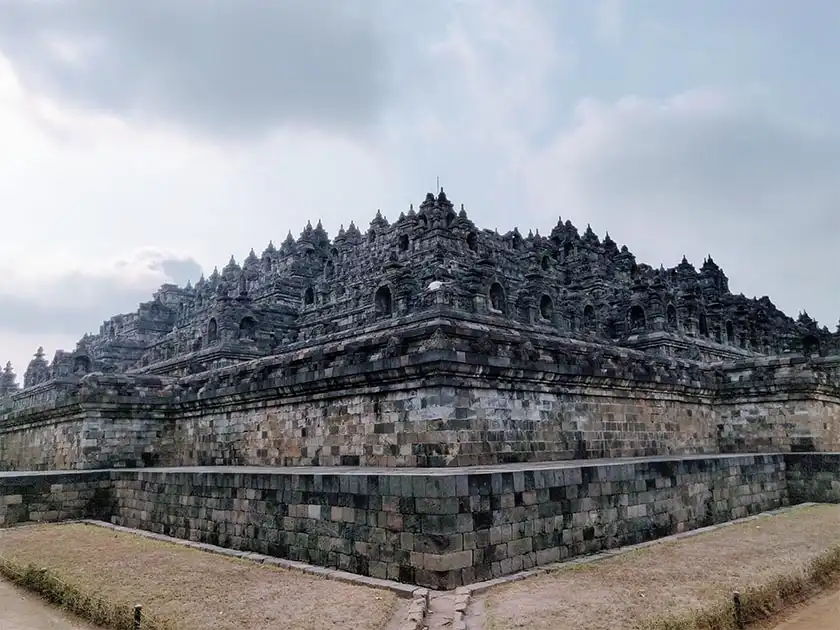
Nestled in the heart of Java, Indonesia, Borobudur stands as a sacred and mysterious marvel. Its intricately carved stone reliefs and towering stupas hold the secrets of an ancient Buddhist empire.
Unveiling its hidden meanings, this enigmatic temple invites contemplation and awe, connecting us to a forgotten world of spiritual enlightenment.
Ancient Origins
Borobudur dates back to the 9th century, making it one of the oldest Buddhist temples in the world. Its construction is attributed to the Sailendra dynasty, although much of its early history and purpose remain a mystery.
Unique Architecture
Borobudur’s architecture is unique and captivating. It consists of a massive stone pyramid adorned with intricate relief panels and adorned with numerous Buddha statues. The design represents a microcosm of Buddhist cosmology and serves as a spiritual pilgrimage site.
Hidden History
Borobudur remained hidden beneath volcanic ash and dense jungle vegetation for centuries until its rediscovery in the 19th century. The process of uncovering and restoring this hidden gem added to its mystique and allure.
Symbolic Carvings and Narrative Panels
The relief panels on Borobudur depict scenes from Buddhist teachings, Jataka tales, and daily life during the temple’s era. These intricate carvings provide insights into the cultural, social, and religious beliefs of the time, but their exact meanings and interpretations are still a subject of study and speculation.
Spiritual Significance
Borobudur is not only an architectural marvel but also a pilgrimage site for Buddhists. The temple represents the spiritual journey from ignorance to enlightenment, with visitors ascending through several levels, each representing a step towards Nirvana.
Borobudur’s grandeur, hidden history, and intricate carvings make it a captivating and mysterious temple.
It stands as a testament to the cultural and artistic achievements of ancient Java and continues to be a place of reverence and wonder.
6. Gate of the Sun, Bolivia
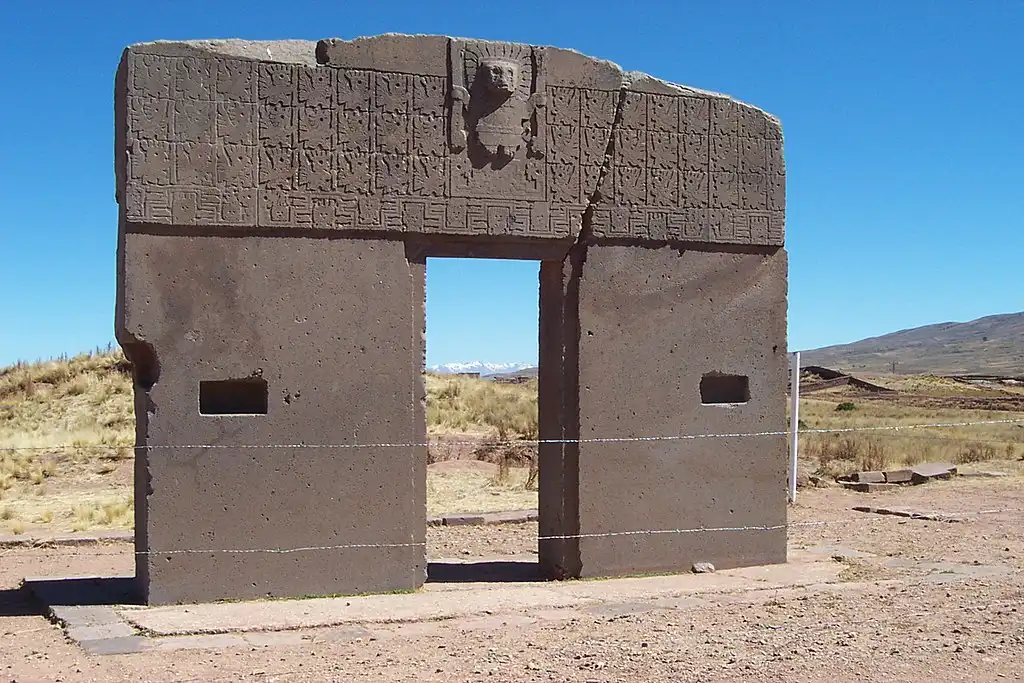
The Gate of the Sun, also known as the Gateway of the Sun, is a fascinating archaeological site located in Bolivia, specifically on the Island of the Sun in Lake Titicaca. Here are some intriguing aspects of the Temple of the Sun:
Incan Sacred Site
The Temple of the Sun holds great significance in Incan mythology and spirituality. It was believed to be a sacred site dedicated to the worship of Inti, the Sun God, who played a central role in Incan cosmology and religious beliefs.
Celestial Alignments
The temple’s design and layout were carefully aligned with celestial events and astronomical phenomena. It is said that specific features, such as the Inti Watana stone, were used to track solstices and equinoxes, emphasizing the Incan connection to the cycles of the sun.
Intricate Stonework
The Temple of the Sun showcases impressive Incan stonemasonry. The precision and fitting of the stones without the use of mortar are remarkable, leaving visitors in awe of the architectural skills of the Incan civilization.
Spiritual and Ceremonial Significance
The temple’s location on the Island of the Sun, surrounded by the majestic Lake Titicaca, adds to its spiritual ambiance.
It is believed that the island and the temple were regarded as sacred place of pilgrimage and served as a venue for important Incan rituals and ceremonies.
Mysteries and Legends
Like many ancient sites, the Temple of the Sun carries its fair share of mysteries and legends. There are stories of hidden chambers or secret tunnels beneath the temple, although the extent and purpose of these remain speculative.
The Temple of the Sun in Bolivia stands as a testament to the ingenuity and spiritual beliefs of the Incan civilization. Its celestial alignments, intricate stonework, and sacred surroundings make it a captivating destination for those intrigued by ancient cultures and their connections to the cosmos.
7. Temple of the Jaguar, Guatemala
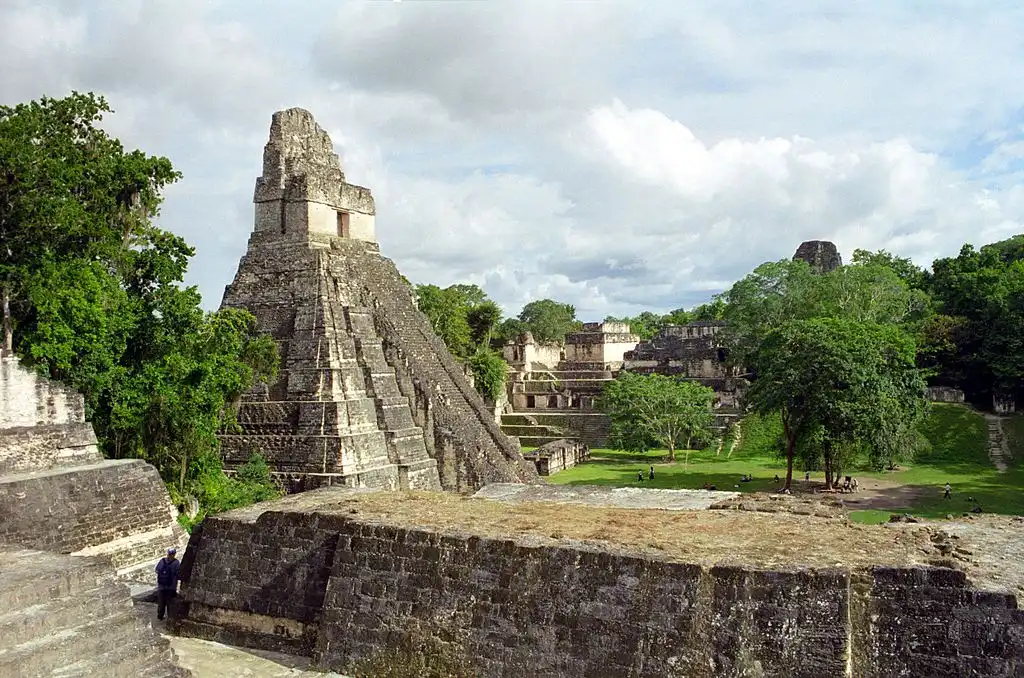
The Temple of the Jaguar, also known as the Temple of the Great Jaguar, is an intriguing ancient Mayan temple located in the archaeological site of Tikal, Guatemala.
In the dense jungles of Guatemala, the Temple of the Jaguar looms in silence, its secrets preserved through the ages. Adorned with intricate stone carvings and towering hieroglyphs, this enigmatic structure whispers tales of an ancient civilization lost to time.
Step into its sacred chambers and feel the weight of its mysterious legacy. Here are some intriguing aspects of the Temple of the Jaguar:
Architectural Splendor
The Temple of the Jaguar is a grand structure characterized by its impressive stepped pyramidal design. It rises prominently above the surrounding jungle, showcasing the architectural prowess of the ancient Mayans.
Symbolism and Purpose
The temple is believed to have held significant religious and ceremonial importance in Mayan society. Its name, “Temple of the Jaguar,” stems from the presence of large jaguar sculptures at the base of the temple, symbolizing power, strength, and connection to Mayan deities.
Royal Burial Site
Excavations at the Temple of the Jaguar have revealed tombs within its chambers, suggesting that it served as a burial site for Mayan rulers or elite individuals. These findings shed light on the royal practices and beliefs surrounding death and the afterlife in Mayan culture.
Astronomical Alignments
Like many Mayan structures, the Temple of the Jaguar is believed to have been built with careful astronomical alignments. It is thought to have been oriented to specific celestial events, highlighting the Mayan civilization’s deep knowledge and reverence for astronomical phenomena.
Sacred Complex
The Temple of the Jaguar is part of a larger complex of temples, plazas, and structures in Tikal. Its positioning within this complex, along with other temples and pyramids, creates a sacred environment that embodies the spiritual and political significance of Tikal during its heyday.
The Temple of the Jaguar stands as a testament to the rich Mayan civilization and its architectural achievements.
Its symbolism, royal connections, and celestial alignments contribute to its intrigue and make it a captivating site for exploring the fascinating world of ancient Mayan culture.
8. Temple of Osiris at Abydos, Egypt
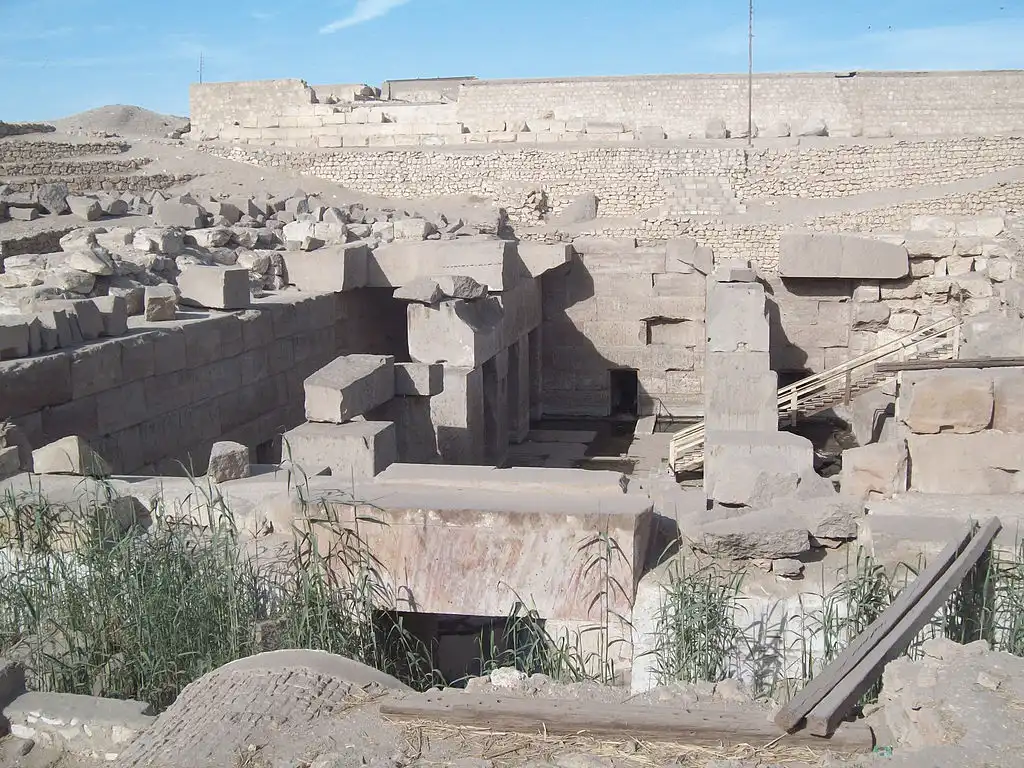
Amidst the sands of Egypt, the Temple of Osiris at Abydos stands as a gateway to the realm of the mystical. Its intricate wall carvings and hieroglyphs depict the sacred stories of ancient gods and pharaohs, leaving us mesmerized by the enigma of their meaning.
Delve into this ancient sanctuary and embrace the allure of its mysterious past. The Temple of Osiris at Abydos in Egypt is a fascinating and mysterious ancient temple complex. Here are some intriguing aspects of the Temple of Osiris at Abydos:
Religious Significance
The Temple of Osiris at Abydos is dedicated to the Egyptian god Osiris, the god of the afterlife and resurrection. It was an important religious site in ancient Egypt and was considered a sacred place of pilgrimage.
Enigmatic Origins
The temple complex at Abydos has a long history, with construction and expansion occurring over several dynasties.
The oldest part of the temple dates back to the reign of Pharaoh Seti I, but there are also earlier structures from the predynastic period. The origins and evolution of the temple complex remain mysterious.
Osirion
Within the Temple of Osiris, there is a unique structure known as the Osirion. It consists of a subterranean hall with massive stone pillars, reminiscent of the megalithic architecture found in other ancient sites around the world. The purpose and exact function of the Osirion continues to baffle researchers.
Symbolic Carvings and Reliefs
The walls of the Temple of Osiris at Abydos are adorned with intricate carvings and reliefs that depict various religious scenes, rituals, and symbols. These carvings provide insights into ancient Egypt’s religious beliefs and mythology, but some of their meanings and significance remain open to interpretation.
Cult of Osiris
Abydos was believed to be the burial place of Osiris, and the temple served as a center for the worship and rituals associated with the god.
It played a crucial role in the cult of Osiris and the annual Osiris Mysteries, which were important religious events in ancient Egyptian culture.
The Temple of Osiris at Abydos stands as a testament to the religious and mythological beliefs of ancient Egypt.
Its enigmatic origins, unique architectural features, and intricate carvings continue to intrigue and inspire wonder among those who explore its ancient halls.
9. Chichen Itza, Mexico
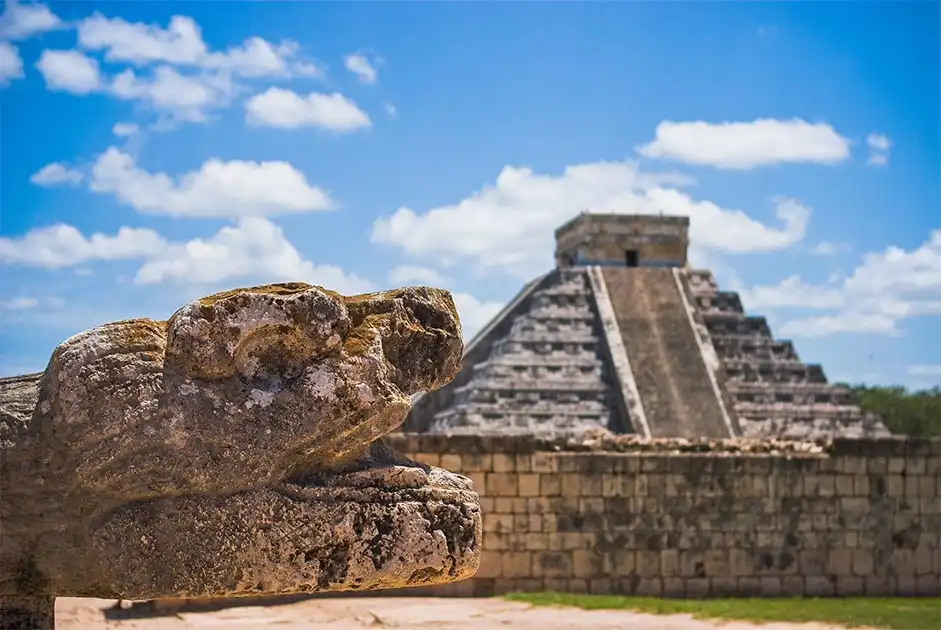
Chichen Itza, located in the Yucatan Peninsula of Mexico, is an iconic and mysterious archaeological site that was once a significant center of the ancient Maya civilization. Here are some intriguing aspects of Chichen Itza:
El Castillo (Temple of Kukulkan)
El Castillo, the imposing pyramid at Chichen Itza, is one of the most recognizable structures in Mesoamerica. It exhibits precise architectural design and aligns with astronomical events. During the equinoxes, the play of light and shadow on the pyramid creates the illusion of a serpent descending the temple’s steps.
Astronomical Significance
The Mayans were skilled astronomers, and Chichen Itza reflects their deep knowledge. The site contains various structures that align with celestial events such as solstices and equinoxes.
This astronomical precision showcases the Mayans’ advanced understanding of celestial cycles and their integration into their architecture.
Sacred Cenote
The Sacred Cenote, a natural sinkhole within Chichen Itza, held significant religious and ceremonial importance for the Maya. It was believed to be a sacred site where offerings and sacrifices were made to the gods, contributing to the mysterious and spiritual aura of the city.
Ball Game Court
Chichen Itza features the most extensive and best-preserved ancient Mesoamerican ball game court. The ball game played there had deep cultural and symbolic significance, representing cosmic battles, human sacrifice, and the cyclical nature of life and death.
Puuc Architecture
Chichen Itza showcases a blend of architectural styles, including elements of the Puuc style from the nearby region. This fusion of architectural influences from different periods and regions adds to the enigma and complexity of the site.
Chichen Itza’s extraordinary structures, astronomical alignments, and cultural significance make it a captivating and mysterious temple complex. Exploring its temples, pyramids, and other architectural wonders offers a glimpse into the rich history and profound spirituality of the ancient Maya civilization.
10. Potala Palace, Tibet
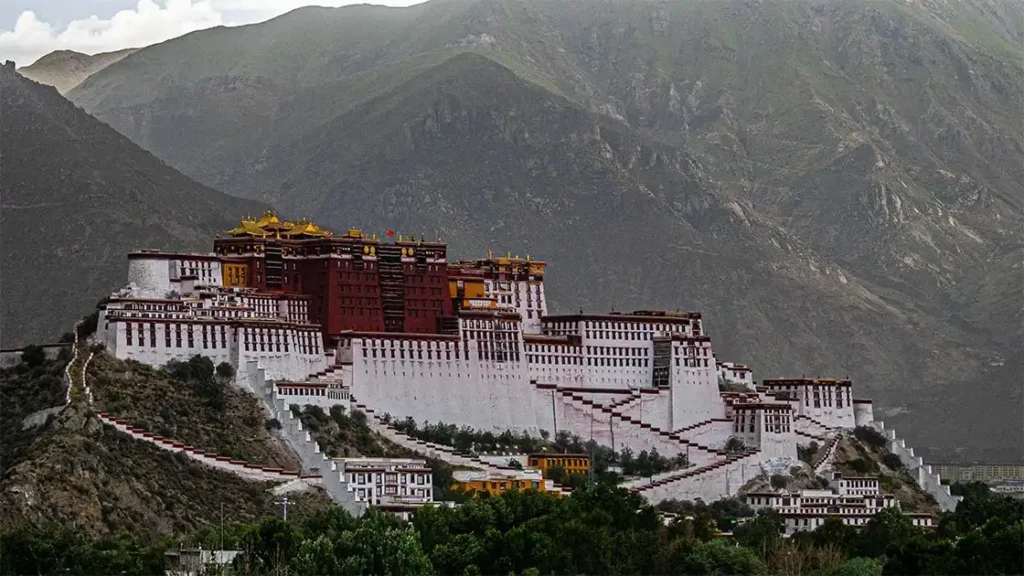
The Potala Palace, located in Lhasa, Tibet, is a majestic and mysterious temple complex that holds immense religious and cultural significance in Tibetan Buddhism. Here are some intriguing aspects of the Potala Palace:
Sacred Residence
The Potala Palace served as the winter residence of the Dalai Lamas, the spiritual leaders of Tibet. It was not only a palace but also a center of governance and religious activities, housing numerous chapels, meditation rooms, and ceremonial halls.
Architectural Marvel
The Potala Palace is a remarkable feat of architecture, perched atop Marpo Ri (Red Hill) at an elevation of over 3,700 meters.
Its distinctive white and red colors, intricate design, and tiered structure make it a visually striking and awe-inspiring sight.
Hidden Treasures
Within the Potala Palace, there are numerous hidden chambers and sacred relics, including precious statues, scriptures, and intricate murals.
Some areas of the palace are off-limits to the public, adding to its air of mystery and intrigue.
Spiritual Significance
The Potala Palace is regarded as a sacred pilgrimage site for Tibetan Buddhists. It houses important religious artifacts and is associated with the spiritual lineage of the Dalai Lamas, making it a focal point for Buddhist rituals and practices.
Historical and Cultural Heritage
The Potala Palace is recognized as a UNESCO World Heritage site and is considered one of the most important cultural and historical landmarks in Tibet.
It embodies the rich Tibetan Buddhist tradition and reflects the resilience and spirituality of the Tibetan people.
The Potala Palace’s imposing presence, religious significance, and hidden treasures contribute to its mystique and allure.
It stands as a symbol of Tibetan Buddhism and serves as a reminder of the rich cultural heritage and spiritual legacy of the Tibetan people.
You may also like:
- 20 Facts About the Konark Sun Temple – A Magnificent Masterpiece of Ancient India
- 10 Incredible Facts about Madhubani Paintings
Conclusion
In conclusion, the world’s mysterious temples stand as remarkable testaments to human ingenuity, spirituality, and the enigmatic allure of the past. From the intricate carvings of India to the hidden sanctuaries of South America, these mysterious temples have fascinated and inspired generations, inviting us to explore the depths of their mysteries.
These ancient structures hold secrets that elude our understanding, challenging scholars and adventurers to decipher the symbols, unravel the legends, and unearth the forgotten knowledge of civilizations long gone.
They ignite our imagination, leaving us in awe of the architectural marvels, the intricate craftsmanship, and the spiritual practices that shaped their existence.
The mysterious temples around the world beckon us to step beyond the boundaries of our present reality and venture into a realm where myths intertwine with history, where the tangible and the intangible merge.
They offer glimpses into the cultural heritage, religious beliefs, and scientific advancements of ancient civilizations, reminding us of the profound wisdom and ingenuity that flourished in ages past.
As we explore these sacred sites, we are reminded that the pursuit of knowledge and the desire to uncover the mysteries of our world are timeless endeavors.
These mysterious temples whisper stories of forgotten empires, forgotten gods, and forgotten wisdom, urging us to preserve and honor the legacies they carry.
Whether we seek answers to historical puzzles, spiritual enlightenment, or simply the thrill of discovery, the mysterious temples around the world provide a gateway into the depths of our collective human experience.
They invite us to embrace the wonder and curiosity that lie within us and to embark on a journey of exploration and self-discovery.
So, let us continue to marvel at the enigmatic allure of these mysterious temples, embracing the mystery that surrounds them, and allowing their secrets to inspire us to delve deeper into the vast tapestry of human history and the wonders that lie within our world.



